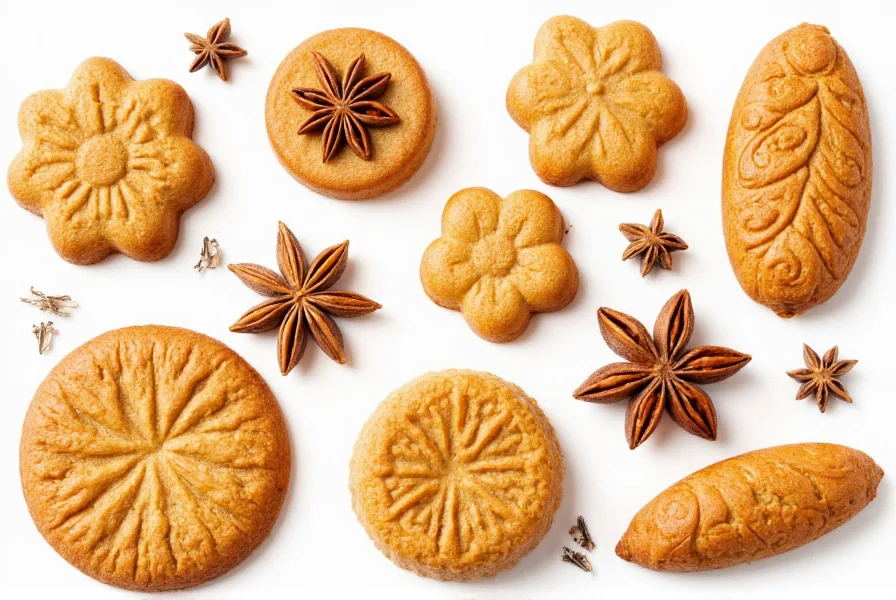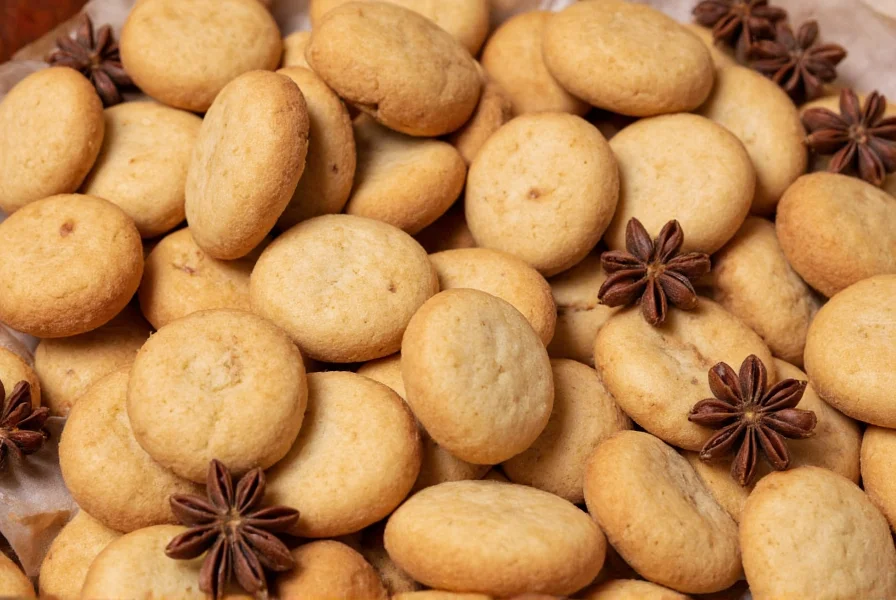For centuries, anise-flavored cookies have been woven into Italian culinary tradition, particularly in Tuscany and Umbria where they're often served during holidays or with coffee. The unique flavor profile comes from anise seeds (Pimpinella anisum), not to be confused with star anise which has a stronger, more medicinal taste. Traditional Italian anise cookies contain no artificial additives—just pure ingredients that create that distinctive aromatic experience bakers and eaters have cherished for generations.
The Cultural Significance of Anise in Italian Baking
Anise has been used in Italian cooking since Roman times, valued both for its flavor and digestive properties. In many Italian households, the scent of baking anise cookies signals special occasions. The cookies often appear during Christmas celebrations as part of the "cucina povera" (poor kitchen) tradition—simple ingredients transformed into something extraordinary. In Tuscany, cavallucci ("little horses") were originally created as portable energy for travelers and laborers, with the anise acting as a natural digestive aid after meals.

Authentic Italian Anise Cookies Recipe
Making traditional Italian anise cookies requires attention to detail but uses straightforward techniques passed down through generations. The following recipe yields approximately 24 cookies with that perfect balance of crunch and flavor.
Ingredients for Traditional Biscotti all'Anice
- 250g all-purpose flour (plus extra for dusting)
- 150g granulated sugar
- 3 large eggs at room temperature
- 1 tablespoon fresh orange zest
- 1 teaspoon baking powder
- 1/2 teaspoon fine sea salt
- 2 tablespoons high-quality anise seeds
- 1 teaspoon pure vanilla extract
- Optional: 1 tablespoon dark rum or espresso for depth
Step-by-Step Baking Instructions
- Prepare the dough: In a large bowl, whisk together flour, sugar, baking powder, and salt. Create a well in the center and add eggs, vanilla, orange zest, and optional rum/espresso. Mix until just combined—do not overwork.
- Incorporate anise: Gently fold in anise seeds, ensuring even distribution without crushing them (which would release bitter oils).
- Shape the logs: Divide dough into four portions. On a floured surface, roll each portion into a 15-inch log about 1.5 inches in diameter. Place logs on a parchment-lined baking sheet, spacing them at least 3 inches apart.
- First bake: Bake at 350°F (175°C) for 25-30 minutes until golden and firm to the touch. Remove from oven and let cool for 10 minutes.
- Second bake (for crunch): Reduce oven temperature to 325°F (160°C). Carefully slice logs diagonally into 1/2-inch thick pieces. Arrange cut-side down on baking sheet and bake 15-20 minutes until crisp. For softer cookies, skip this step and serve after first bake.
- Cooling: Transfer to wire rack and cool completely before storing.
Perfecting Your Italian Anise Cookies
Several factors determine whether your biscotti all'anice turn out authentic:
| Factor | Traditional Approach | Common Mistake |
|---|---|---|
| Anise preparation | Seeds used whole or lightly crushed | Over-processing seeds releasing bitter compounds |
| Dough consistency | Firm but pliable enough to shape without cracking | Too wet (spreads) or too dry (crumbles) |
| Baking temperature | Moderate heat for even cooking | Too high (burns exterior, raw interior) |
| Cooling process | Complete cooling on wire rack | Removing from pan too soon causing breakage |
Regional Variations Across Italy
While the basic concept remains consistent, regional differences create delightful diversity in Italian anise cookies:
- Tuscan Cavallucci: Often include蜜饯 (candied fruit), nuts, and a coating of honey and sesame seeds
- Roman Mostaccioli: Feature chocolate in the dough with anise flavoring
- Sicilian Cubbaita: Combine anise with sesame seeds and honey in a brittle-like confection
- Northern Italy: Sometimes incorporate grappa or other regional spirits

Storage and Serving Recommendations
Proper storage maintains the distinctive texture of Italian anise cookies:
- Store in airtight container at room temperature for up to 2 weeks
- Layer cookies with parchment paper to prevent sticking
- For extended storage, freeze in vacuum-sealed bags for up to 3 months
- Revive slightly stale cookies by warming in 300°F oven for 5 minutes
Traditionally, Italians serve anise cookies with Vin Santo (sacred wine), espresso, or after dinner as a digestive. The cookies also pair beautifully with strong cheeses or as an accompaniment to fruit-based desserts.
Troubleshooting Common Issues
Even experienced bakers encounter challenges with Italian anise cookies. Here's how to address frequent problems:
- Too crumbly: Add one additional egg yolk to the dough next time
- Lacking flavor: Use freshly toasted anise seeds (350°F for 3-5 minutes) before incorporating
- Burning on bottom: Place baking sheet on middle rack with an empty sheet pan on rack below
- Not crunchy enough: Extend second bake time by 5-10 minutes, watching carefully
Frequently Asked Questions
What's the difference between anise and star anise in Italian cookies?
True anise (Pimpinella anisum) has a sweeter, more delicate licorice flavor compared to star anise which is stronger and more medicinal. Authentic Italian cookies use green anise seeds, not star anise which is actually from a different plant family and not traditional in Italian baking.
Can I make Italian anise cookies without eggs for dietary restrictions?
While traditional recipes include eggs, you can substitute each egg with 3 tablespoons aquafaba (chickpea brine) or a flax egg (1 tablespoon ground flaxseed mixed with 3 tablespoons water). Note that the texture will be slightly different—more crumbly than the traditional version.
Why do my Italian anise cookies spread too much during baking?
Excessive spreading usually indicates dough that's too warm or contains too much moisture. Chill the shaped logs for 20 minutes before baking, ensure your baking powder is fresh (not expired), and verify your oven temperature with an independent thermometer as inaccurate oven temps commonly cause spreading issues.
How can I enhance the anise flavor in traditional Italian cookies?
For more pronounced anise flavor, toast the seeds lightly before use (350°F for 3-5 minutes), grind them slightly with a mortar and pestle, or steep them in the orange zest and optional rum for 24 hours before incorporating into the dough. Using high-quality, recently harvested anise seeds makes the most significant difference.
Are Italian anise cookies typically hard or soft in texture?
Traditional Italian anise cookies vary by region—Tuscan cavallucci are typically soft and chewy while classic biscotti all'anice are twice-baked to achieve a crunchy texture perfect for dipping. The single-bake version yields a softer cookie similar to a shortbread, while the traditional twice-baked method creates the characteristic crunch associated with Italian biscotti.











 浙公网安备
33010002000092号
浙公网安备
33010002000092号 浙B2-20120091-4
浙B2-20120091-4